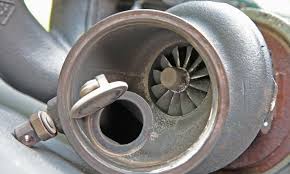
Introduction
A bad turbo wastegate can severely handicap your performance in a turbocharged car. It can cause overboost, underboost or even complete boost loss, not only affecting the amount of power you have, but also resulting in damage to your engine, as well. Let’s take a look at the common symptoms of turbo wastegate failure, how to diagnose those issues and how to fix them. Whether your wastegate is internal or external, it is important that you understand how to keep it running optimally to extend the life of your engine and get the maximum performance from it.
Common Symptoms of Turbo Wastegate Problems
Look for Increased Pressure Fluctuations: A faulty wastegate will cause some wild pressure fluctuations, taking the form of surges (overboost) or drops (underboost) in your boost levels. If you experience a pulse in the boost gauge that makes it read erratically, you might have a problem with the wastegate. An overboost scenario can lead to engine knock, which is a catastrophic failure if left unchecked.
No power: One of the easiest ways to tell a troubled turbo is if your engine loses power. If the wastegate is locked open, the turbo won’t be able to create enough boost pressure to provide the requisite pressure to your engine. The common term used for this is ‘boost leak’, but essentially the pressurised pumped air from the turbo is leaking before it can be fed into your pistons.
Overheating of the Engine: Turbo engines depend on the wastegate to control heat. If the wastegate is open, the turbo can spin too fast, causing the charge air (air going into the engine) to become too hot. If the wastegate becomes stuck closed, the turbo continues to over-spin and the charge air can overheat. This can cause damage to the turbo and other parts of the engine.
Check Engine Light (CEL) Check Engine Lights, or a CEL, is an alert issued if your vehicle’s engine control unit (ECU) detects an issue related to your engine boost pressure. When the ECU is outside of the pre-set boost pressure range, it will light the CEL. There can be other things that cause a CEL to light but a faulty wastegate is especially common for turbocharged vehicles.
Leak Around Wastegate: Exhaust leaks: when the wastegate isn’t sealing well, it can cause an exhaust leak, dropping the engine’s performance. A wastegate that is leaking will allow exhaust gases to escape, reducing the effectiveness of the turbo and draining off boost pressure.
Diagnosing Turbo Wastegate Issues
Boost Leak Test: One of the best ways to diagnose a wastegates is to perform a boost leak test. By pressurising the intake system you can determine if air is leaking out of the system, which would indicate a wastegate problem. If air is leaking out through the wastegate actuator or valve this means that the wastegate is stuck wide open or is leaking shut.
Wastegate Actuator, Cont’d: Wastegate actuators open and close the wastegate valve in response to boost pressure. The valve control can wear over time or the diaphragm can rupture, rendering the wastegate nonresponsive. With your engine cold, connect the actuator to an air volume regulator set at 10 psi, or to a pressurised air source at 10 psi, with the exhaust system open, and have an assistant turn the turbo properly equipped with a balancer, use the 20-lb dormant-weight setting to activate the actuator). By applying compressed air, the turbo should produce a loud whistle or scream sounds as it compresses. If you don’t hear the sound, it means the actuator isn’t moving or is moving slowly, possibly due to old age or possible internal leaks. At this point, replace it.
Check the Wastegate Valve At some point, work done by carbon buildup or debris will cause the wastegate valve to stick in either the open or closed position. Peeling back the intake tube reveals the wastegate valve, seen behind the shaft inside the turbo. Inspect the wastegate valve for any signs of blockage or carbon buildup. Carbon buildup in the wastegate valve will cause it to stick at either partial or full opening. Sometimes it can be dislodged with a spray can of supplemental cleaner. More severe cases require removal of the turbine housing from the turbo and installation of an alligator clip to the plunger inside. It can then be driven against a sanding drum to clear any carbonic blockage. That will allow the wastegate valve to operate properly again, driving at high boost pressure or instantly reducing boost to just 4 PSI when the load of the vehicle decreases, such as when pulling out of typical three-sided New England stop signs.
Check for Vacuum Line Leaks: Some setups see a vacuum line used to control the wastegate, such as a line running from the actuator to the wastegate. If this line has a crack or other damage, the actuator won’t receive the proper signal, and the wastegate won’t function. Check the vacuum lines for wear and cracks, and replace if needed.
How to Fix a Faulty Turbo Wastegate
Change the Actuator: If the wastegate actuator is worn or faulty, replacement is often the best course of action. Installing a new actuator will restore correct boost control so that the wastegate opens and closes at the correct pressure level. The actuator must match the turbocharger and boost level.
If the valve gets stuck because of carbon buildup, clean it with a carbon cleaner. If that doesn’t do the trick, you may need to replace the wastegate valve.
Adjust the Wastegate: In some cases on boosted and/or turbocharged vehicles, especially those with adjustable external wastegates, a minor adjustment of the Wastegate might catch the needle and prevent your engine from seeing an excess of boost pressure. This is often corrected by adjusting the spring tension to change the wastegate pressure threshold. Internal wastegates of forced induction systems can often also be controlled and adjusted electronically using a boost controller to refine and manage boost levels for different driving situations.
Upgrade External Wastegate: If you’re using an internal turbo wastegate without any other modifications, you’re almost certainly experiencing ample issues. An external wastegate (particularly an adjustable external wastegate) makes for a useful upgrade providing for better boost control especially when running higher boost levels. They are also a lot more durable than their internal counterparts.
Preventing Wastegate Problems
In order for your little baby turbo not give you future problems, the wastegate needs to be maintained properly. Just a few simple tips will help keep your wastegate in working order:
Regular Inspections: Inspect the wastegate actuator and then the valve itself as part of regular maintenance before what could otherwise be a disaster hits. If something is showing wear and sticking, take care of it before problems escalate.
Use Quality Parts: Always use top-notch parts for your wastegate. Cheap or poorly made parts tend to fail more often – leading to performance problems and more downtime.
Install a boost gauge: By placing a boost gauge on your dashboard, you can easily monitor your turbocharger and determine if the turbo wastegate is starting to show signs of wear and tear by paying attention to irregular boost levels.
Conclusion
Without a functioning turbo wastegate, your engine is prone to overheating and could potentially be brought to a literal meltdown. Pinpointing a malfunction in your turbo wastegate quickly can not only save you a hefty bill, it can prevent a potentially catastrophic situation from worsening. These are the most common wastegate problems, and how to diagnose them. 5 Common Turbo Wastegate Problems That Lead To Engine Damage And How To Diagnose Them 1. Stuck Wastegate Valve The turbocharger wastegate dump valve is designed to stir in the extra air during intense acceleration. Its job is to maintain optimal boost pressure (typically under 10 psi) and to protect the turbocharged engine from overheating. However, there are instances when this valve gets stuck open, and this causes the engine to overheat. 2. Wastegate Actuator Failure The turbo wastegate actuator is positioned between the valve and the compressor discharge pipe. It’s basically a spring-loaded plunger designed with a valve on one side. When you step on the accelerator, pedal pressure is sent to the actuator and this causes the valve to open and close. 3. Vacuum Leak A vacuum leak in your car means that you’ll experience a misfire in your engine.


